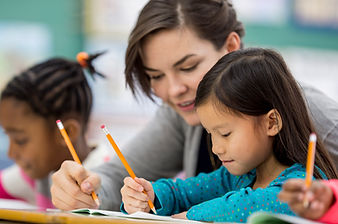
There is no such thing as a child who hates to read; there are only children who HAVE NOT FOUND THE RIGHT BOOK.
—Frank Serafini
Reading a Written Language

Between 200,000 and 300,000 years ago, the first modern humans emerged. They began developing a verbal language around 50,000 years ago, and passed down their knowledge through oral tradition for generations. The thing about oral traditional though is that it can be unreliable- think about a game of telephone. Is the story truly the same after its been passed down through 10 different people? We know today that writing things down helps us remember them better. But, when did humans start doing that? Only about 5,000 years ago.
In the grand scheme of human history, that's really not that long ago. What is even more interesting to think about is the fact that a written language is entirely made up, and reading a written language is not an innate human skill. We are born with the capabilities to speak, and after months of listening to adults ooh-ing, aww-ing, and talking to us, we imitate the sounds as babies, and usually start speaking on our own. But reading? Someone has to teach you how to read. Your brain has to be rewired in order to attach a sound to a letter. Then your brain has to be able to combine those letter sounds to make a word. Then you have to be able to extract meaning from that jumble of sounds you just read. That's a ton of work, and I'm just describing reading a word! Now imagine how much work it is for someone to read a book, a paragraph, or even a sentence! No wonder why people have trouble reading!
The Orton-Gillingham Approach
Orton-Gillingham is a multisensory reading approach that helps struggling readers rewire their brains so literacy skills are understood and retained. The method uses a child's senses (touch, sight, and hearing) so that phonetic sounds and reading patterns can be encoded in their long-term memory. In other words, students will remember for the long haul what sound each letter makes and how to decode big words by breaking them down into smaller units. For more information on how the approach works, you can check out this article or visit the official website.

How I Can Help

OG truly works! It can be utilized in all grade levels, including middle school and high school. Lessons are interactive, multi-sensory, and full of facts about the English language- you'll be surprised what your child teaches you! Each lesson takes an hour to conduct, and focuses on phonemic awareness, spelling, reading fluency, and reading comprehension. I usually see growth just after 3-4 lessons.
If your child is struggling with reading, I would love to help you and your family. Please visit our services page and let me know when you would like to get started!